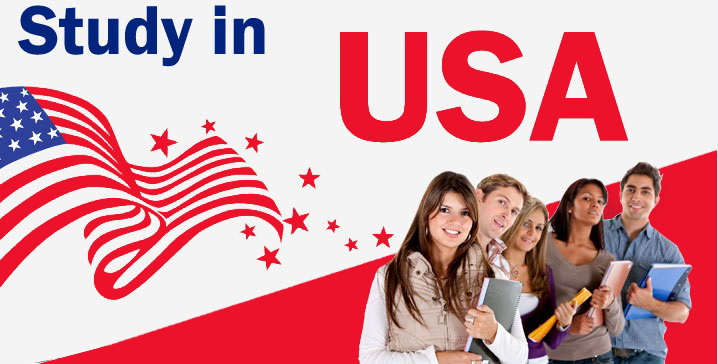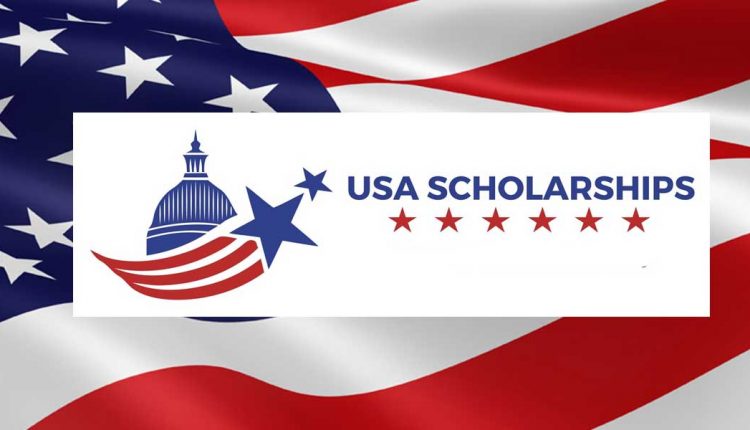Studying in the USA can be a transformative experience, offering top-tier education, diverse cultural experiences, and numerous opportunities for personal and professional growth. Here’s an in-depth guide to help you navigate the process of studying in the United States, from choosing a program to living and working there. When we think about studying abroad for higher education, the first place that comes to mind is the United States.

Studying in the USA can be a transformative experience, offering top-tier education, diverse cultural experiences, and numerous opportunities for personal and professional growth. Here’s an in-depth guide to help you navigate the process of studying in the United States, from choosing a program to living and working there. When we think about studying abroad for higher education, the first place that comes to mind is the United States.
Every year, over a million students from all over the globe apply to study in the USA, and international students contribute over $50 billion to the US economy, making international students an essential part of America. The numbers have been gradually growing, which indicates that the United States is the finest location for overseas students.

- World-Class Education: The USA is home to many of the world’s top universities and research institutions.
- Diverse Programs: A wide range of programs and majors are available at undergraduate, graduate, and professional levels.
- Research Opportunities: The USA offers extensive research opportunities across various fields.
- Cultural Diversity: Experience a rich cultural mosaic with students from all over the world.
- Career Prospects: Graduates from US institutions often have access to extensive job networks and career opportunities.

Top Universities in the USA
Some of the most prestigious universities include:
- Harvard University
- Massachusetts Institute of Technology (MIT)
- Stanford University
- University of California, Berkeley
- California Institute of Technology (Caltech)
- University of Chicago
- Princeton University
- Yale University
- University of Pennsylvania
- Columbia University
Types of Programs
- Undergraduate Degrees: Bachelor’s degrees typically take 4 years to complete.
- Graduate Degrees: Master’s programs usually last 1-2 years, while Ph.D. programs can take 4-7 years.
- Professional Degrees: Programs for specific careers, such as law (JD) or medicine (MD), can be longer.
Research Programs
- University Websites: Explore the official websites of universities and review their academic programs, faculty, and research opportunities.
- Rankings and Reviews: Check university rankings from sources like QS World University Rankings, Times Higher Education, and U.S. News & World Report.

General Steps
1. Research Programs:
- Identify the program and university that best match your academic and career goals.
2. Prepare Application Materials:
- Academic Transcripts: Official transcripts from previous educational institutions.
- Letters of Recommendation: Typically 2-3 letters from professors or professionals familiar with your academic abilities.
- Statement of Purpose: An essay detailing your academic and professional goals.
- Standardized Test Scores: Some programs require GRE, GMAT, or SAT/ACT scores. Check specific requirements.
- Resume/Curriculum Vitae: A detailed account of your academic and professional experiences.
3. Apply Online:
Most universities have an online application portal.
4. Pay Application Fee:
Fees range from $50 to $100 per application.
5. Submit Applications:
Submit all required documents and pay the application fee through the university’s application system.
Application Deadlines
- Undergraduate Programs: Typically in November for Fall admissions and April for Spring admissions.
- Graduate Programs: Deadlines vary widely by program; common deadlines are December 15th or January 15th for Fall admission.

Applying for a Student Visa (F-1 Visa)
- Get Accepted: Receive an acceptance letter from a SEVP-certified school.
- Pay SEVIS Fee: $350 fee for the Student and Exchange Visitor Information System (SEVIS).
- Complete DS-160 Form: The Online Nonimmigrant Visa Application form.
- Schedule an Interview: Book a visa interview at a US embassy or consulate.
- Attend the Interview: Provide required documents:
- Form I-20: Certificate of Eligibility for Nonimmigrant Student Status.
- Valid Passport: Must be valid for at least six months beyond your intended stay.
- Visa Application Fee: $160 application fee.
- SEVIS Fee Receipt: Proof of payment.
- Financial Proof: Evidence of sufficient funds to cover tuition and living expenses.

Tuition Fees
- Undergraduate Programs: $10,000 to $50,000 per year, depending on the institution.
- Graduate Programs: $20,000 to $60,000 per year for many programs.
Living Expenses
- Accommodation: $8,000 to $12,000 per year.
- Food: $3,000 to $5,000 per year.
- Health Insurance: $1,000 to $2,000 per year.
- Other Costs: Transportation, books, and personal expenses.
Total Estimated Cost
- Undergraduate: $21,000 to $67,000 per year.
- Graduate: $30,000 to $80,000 per year.

Types of Financial Aid
- University Scholarships: Many universities offer merit-based or need-based scholarships.
- Federal Student Aid: US citizens or eligible non-citizens can apply for federal financial aid (FAFSA).
- External Scholarships: Search for scholarships from organizations like the Fulbright Program, Rotary International, or private foundations.
- Assistantships: Graduate students may be eligible for research or teaching assistantships.

Housing
- On-Campus: University dormitories or residence halls.
- Off-Campus: Apartments, shared houses, or rental rooms.
Healthcare
- Health Insurance: Check if your university offers a health insurance plan or if you need to purchase one.
Transportation
- Public Transit: Buses, trains, and subways are available in most cities.
- Campus Transport: Many universities provide shuttle services.
Cultural Experience
- Explore Local Communities: Engage in cultural events, join student organizations, and explore American culture and traditions.

Optional Practical Training (OPT)
- Duration: Up to 12 months of work authorization in your field of study.
- STEM Extensions: An additional 24 months for qualifying STEM fields.
H-1B Visa
- Work Visa: A non-immigrant visa that allows you to work in the USA in a specialty occupation.
Pathways to Permanent Residency
- Employment-Based Green Cards: You can explore options for obtaining a green card through employment or family-based sponsorship.

- EducationUSA: U.S. Department of State’s resource for international students.
- U.S. News & World Report: University rankings and program information.
- College Board: Information on SAT, SAT Subject Tests, and college planning.
- Studying in the USA: Comprehensive guide for international students.
Summary Table
| Aspect | Details |
| Top Universities | Harvard, MIT, Stanford, UCB, Caltech, Chicago, Princeton, Yale, Penn, Columbia |
| Program Levels | Undergraduate, Graduate, Professional |
| Application Fees | $50 to $100 per application |
| Tuition Fees | $10,000 to $50,000 per year for undergraduate; $20,000 to $60,000 for graduate programs |
| Living Expenses | $12,000 to $20,000 per year |
| Scholarships | University scholarships, federal aid (FAFSA), external scholarships, assistantships |
| Student Visa | F-1 Visa required; includes SEVIS fee, DS-160 form, visa interview |
| Health Insurance | University plans or private insurance needed |
| Post-Graduation | OPT for up to 12 months, H-1B visa for employment, pathways to permanent residency |

